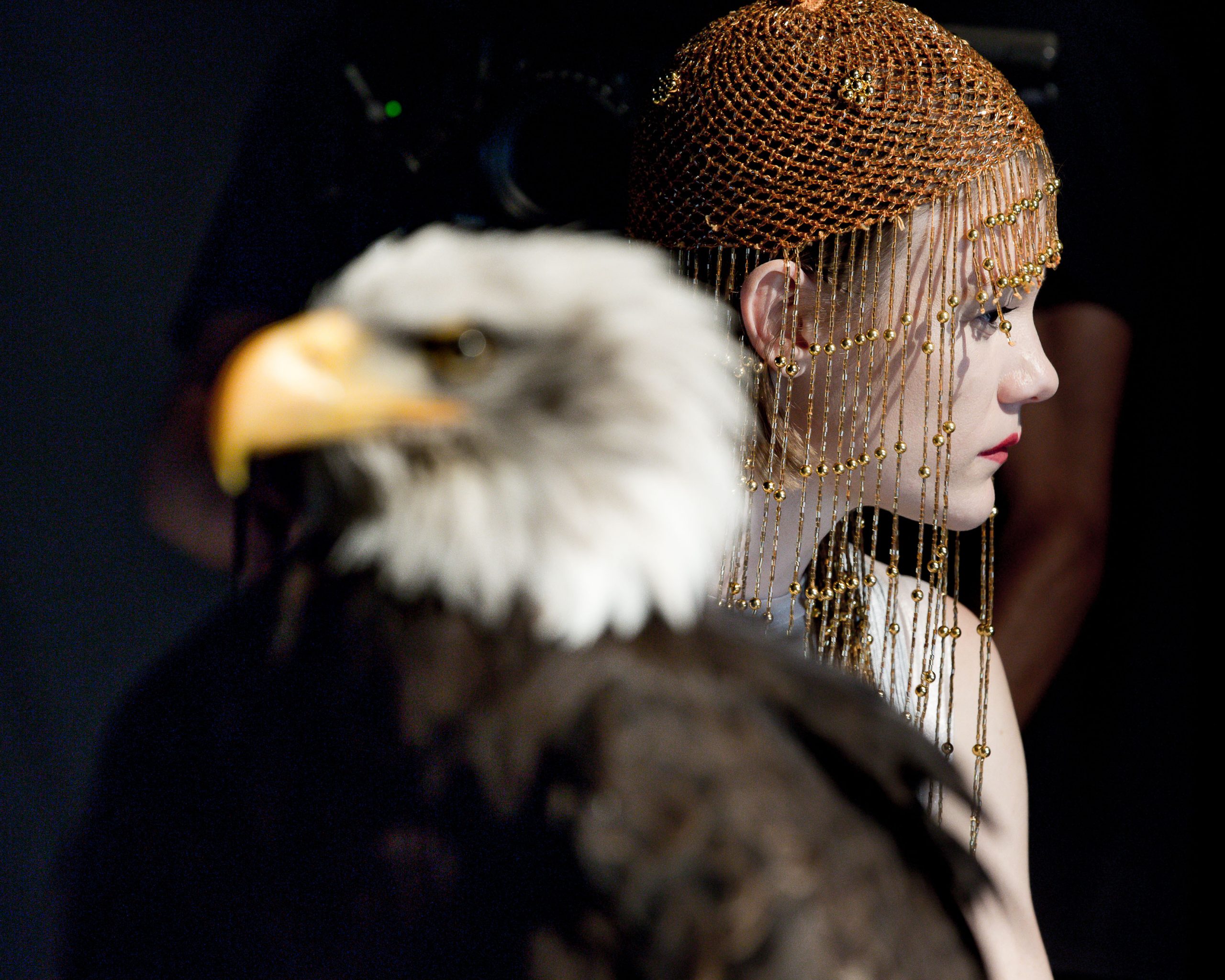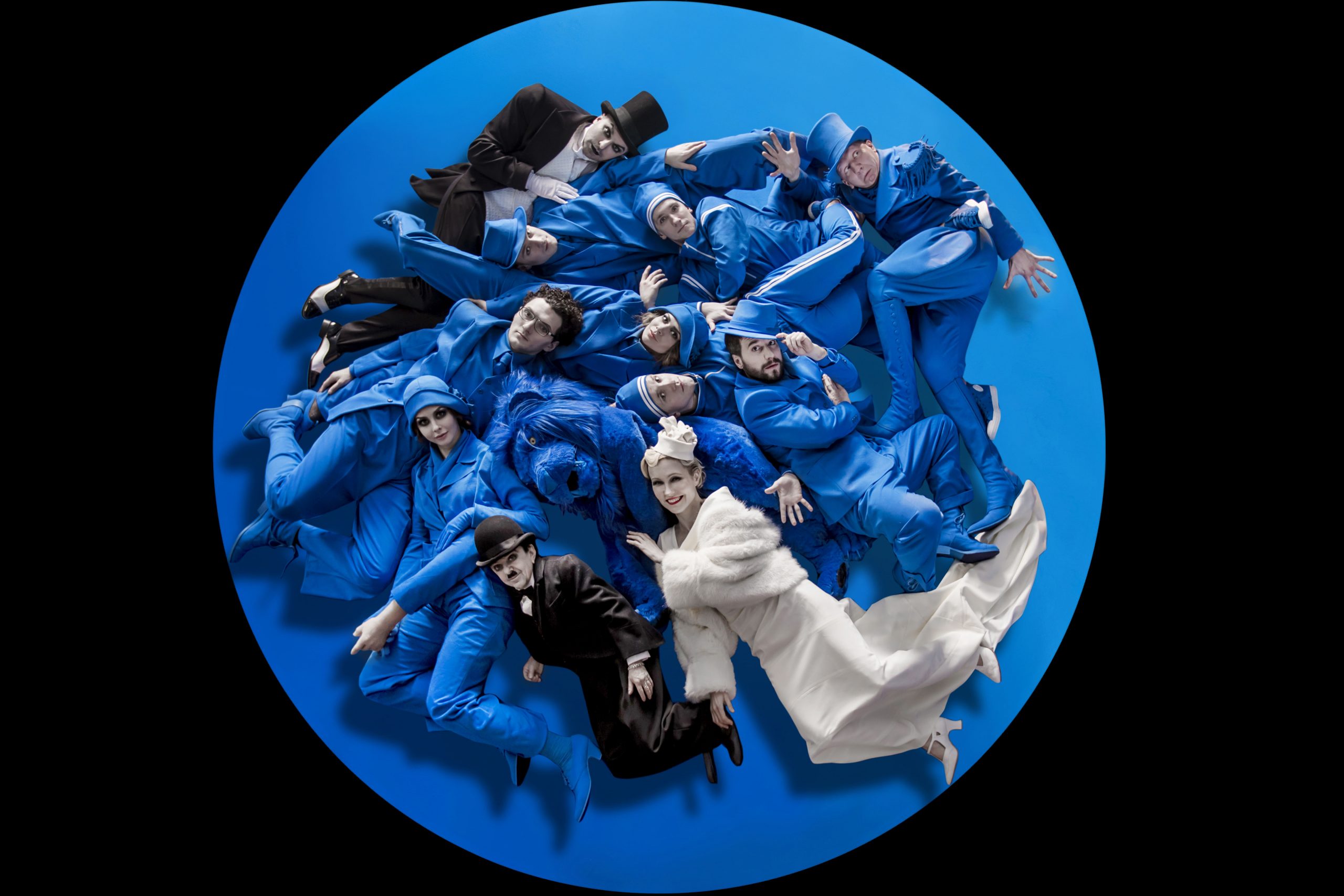First of all, what is Traptown about in a nutshell?
In a nutshell, it’s an invented timeless mythology, a re-written mythology that is universal since most mythologies have something universal in them. Timeless, so that it can “return” time and it’s about oppression. The story is set in a town, where there are two groups and one of them is oppressing the other.
What is your interest and fascination with myths?
When I was younger, I always wanted to invent everything myself. Then, studying myths more, I saw that in fact myths have something so universal about them, which touches everyone. If you are rich, poor, black, white, man or woman, there is always something unifying about them. You can always update myths; you can always make them contemporary depending on how society changes. Myths always contain the truth and so in this way I wanted to write a myth about people living in a town. It’s nice to puzzle yourself with powers. Also, of course you can eliminate a lot of things. In Traptown there is no furniture, no cars, no telephones, no nothing, it’s just a town with high walls. So, you go to the essence of things. I think you have to undress the myth from all the extra layers and say what it’s really about. What is interesting in myths is that you don’t have a lot of side stories, you have one main story and all that is happening is an extension of that idea.
What inspired you with this idea? I mean, in general we talked about myths but specifically for Traptown there’s this idea of an oppressive city. How did you come up with this? Do you have a belief that modern cities trap us?
When I make a theatre or a dance show, I mostly have like eight people on the scene. This time, I decided that I wanted to make a film. We played Blush in Istanbul before and in Blush there was a kind of interaction between the screen and the physicality of the scene. In fact, this show is a follow-up on Blush. I wanted to work again with film, not only with the physical scene. You have a view of this trapped town, which is in the form of a labyrinth. We chose this form as the setting of the film and architects realized the installation. It is a 40 by 40 square maze where people can get lost in and its walls are 5 meters high. The mayor lives in a kind of power room in the film. People on the screen step out of the film and go on the stage, but keep conversing with the actors in the film.
The idea came little by little. I worked a long time on it with the writer Pieter de Byusser and with the architects who helped me design the set. We project the top view of the maze so you have this feeling of being trapped. That’s really the whole idea. History shows us that there is always one group who oppresses the other. So, the story is about two groups in fact and very simple. The mayor’s son, played by a girl, goes to fight for the oppressed, even though his father is from the other side. This is the main conflict and unfortunately it finishes tragically for the son. He does everything wrong and so we feel the impossibility of getting rid of the oppression. The father is very conservative and the son is very rebellious and this of course is a mirror of society today where people say “we want changes, we don’t want the old oppressive powers and there has to be change”. So in this way, it’s kind of a mirror of society today, but of course in a fictional way.
So it has many parts like text, film, dance, music, and architecture. How do you collaborate with these creators? Also, what is your working method in such a complex work?
With me, it first starts with what I want to do. I wanted to do something with film again and I did a lot of pieces with a lot of text in the past. Then little by little we started looking for places we could shoot the film in. I found these architects who had this installation and I went to see the installation in Gent. It was fantastic and I contacted them. I said “don’t you want to work with me on the set?” They were very enthusiastic, so little by little everything came together. I always inform the writers, so I told him that I added a lot of things, because they suited my style. Let’s say he’s more of an intellectual and I want something more impactful on the scene, not only his words. So, in this way it’s a very complete work. It took me a lot of time to complete.
Can you tell us more about the philosophy and principles of your company Ultima Vez?
Ultima Vez is the first and only company I founded. It was established in 1986. I was more of a photographer and into martial arts back in those days. Then, I made a piece that no one remembers, although it was very difficult to make. I didn’t know much about dance, I was never trained as a dancer. The first piece I made won the Bessie Award in New York for the best piece that year. Also, it was a big piece showing how music and film were used in dance. Then, the second production I did also won the Bessie Award and that’s how it all started. Of course the collaboration with musicians, architects, filmmakers, and writers has always been very important. In the beginning, we only produced my work. Now we started to produce others works as well. We started to produce works with young people, which is a very different kind of work. We work a lot in the community, in Molenbeek, which is a rough part of Brussels, we have our studio there and we work in the neighborhood. We work internationally of course since dance has always been international. We have like ten dancers and in the last season we had dancers from nine different nationalities. Ultima Vez is an open production house that produced most of my work, but also the work of other people.
When I watched Belgian work abroad and in Turkey, I noticed that Belgium is very successful in contemporary dance and performance scene, we see very creative, very unusual and ground-breaking work coming out of Belgium and you are one of those people who started this in the 80’s. Why do you think Belgium is so successful in this respect?
It’s difficult to say, but I think it’s because we didn’t have a very successful dance school back then. I studied psychology, but I was more of a photographer, someone else working in dance actually studied visual arts and so on. So, we all had to be inventive and in the 80’s we made it possible that you could talk in a dance show. We could work with an actor and have dancers alongside. We didn’t have this American approach to dance, which I think is still very important today. We didn’t have the European approach either, so we had to invent something ourselves. I must also say that Belgium is a small country and as soon as you announce that you’re making a dance show, you attract these wonderful technical dancers who came from Spain and other countries. So, we received a lot of talent from abroad and they had to adapt their style according to our story. I still work with technical dancers these days. I have to come up with imaginative things because I am the leader. I believe if I studied in a dance or theatre school, I wouldn’t be able to produce the work that I do now. It would be very different. Perhaps it would be faster, but it wouldn’t be as refreshing. Also back in the earlier days, there weren’t many opportunities to take dance lessons. I am a little afraid of the globalization of dance these days. Everybody knows everything. All the dancers have taken all the lessons, but in the end they are very similar. There is even a kind of conservatism coming back to dance now. The practitioners want to have their own concepts, there is less freedom and the idea that dance is dance and you should not try to change it is coming back. That’s why I am very happy to come to Istanbul with Traptown where you see it is possible to do two-three different things at the same time and still tell the same story.







